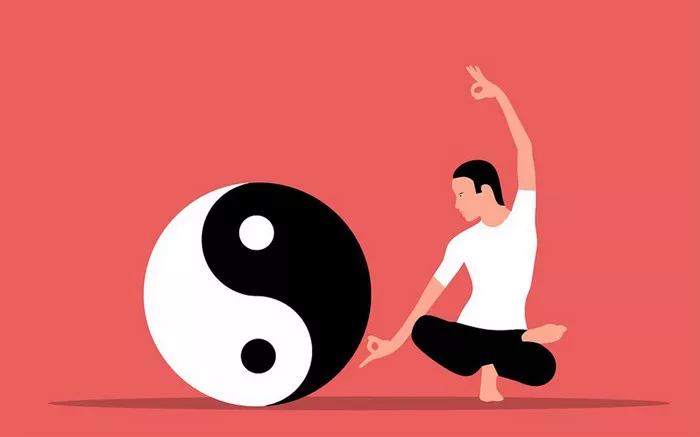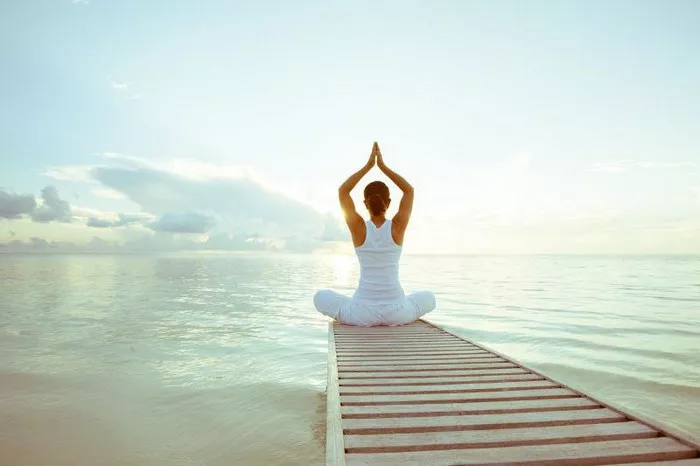In the ever-evolving landscape of yoga, practitioners seek diverse avenues to enhance their physical, mental, and spiritual well-being. Two distinct yet complementary styles have gained prominence in recent years – Yin and Yang Yoga. Rooted in ancient Eastern philosophy, these practices offer a unique blend of stillness and dynamism, creating a harmonious equilibrium within the body and mind.
Understanding the Foundation: Yin and Yang Philosophy
Before delving into the intricacies of Yin and Yang Yoga, it is essential to grasp the foundational principles of Yin and Yang philosophy. Originating from ancient Chinese thought, the Yin-Yang concept represents the duality inherent in all aspects of existence. Yin and Yang are opposite forces, yet they are interconnected and interdependent, forming a balanced whole. Yin is associated with qualities such as receptivity, passivity, darkness, and stillness, while Yang embodies activity, brightness, assertiveness, and motion.
Yin Yoga: The Gentle Embrace of Stillness
Origins and Principles
Yin Yoga, a relatively contemplative and passive practice, draws inspiration from the principles of Yin and Chinese Taoist philosophy. Developed in the late 1970s by martial arts expert and yoga teacher Paulie Zink, Yin Yoga gained popularity as a counterbalance to the more dynamic and muscular Yang styles prevalent at the time.
In Yin Yoga, postures are held for an extended duration, typically ranging from three to five minutes or even longer. This extended hold allows practitioners to target the deeper connective tissues, such as ligaments, tendons, and fascia, as well as stimulate the flow of energy along the body’s meridian lines.
Characteristics of Yin Yoga Postures
Yin postures are characterized by a passive and meditative approach. Seated or reclined poses, such as the Butterfly Pose or the Sphinx Pose, gently stretch and stress the connective tissues, promoting flexibility and joint health. These postures invite practitioners to embrace stillness, encouraging a meditative state that goes beyond the physical realm.
Benefits of Yin Yoga
Improved Flexibility: By targeting the deep connective tissues, Yin Yoga enhances flexibility, particularly in areas often neglected in more dynamic practices.
1. Stress Reduction: The extended holds and meditative nature of Yin Yoga promote relaxation, reducing stress and tension in both the body and mind.
2. Balancing Energy Flow: Yin postures stimulate the flow of chi or prana, vital energy in Chinese and Indian traditions, respectively, fostering balance and harmony within the body.
3. Joint Health: The gentle stress on joints in Yin Yoga helps maintain and improve joint health, reducing the risk of stiffness and injury.
Yang Yoga: The Dynamic Dance of Strength and Flow
Origins and Principles
While Yin Yoga emphasizes stillness, Yang Yoga is a more dynamic and active practice that focuses on movement, strength, and fluidity. Rooted in the traditional Hatha Yoga, Yang Yoga incorporates various styles, including Vinyasa, Ashtanga, and Power Yoga. These styles share a common thread – a rhythmic and continuous flow of postures coordinated with breath.
Yang Yoga is an empowering practice that builds heat in the body, promoting cardiovascular health, muscle strength, and endurance. It is a contemporary adaptation of the traditional yogic approach, catering to the needs of modern practitioners seeking a more physically engaging experience.
Characteristics of Yang Yoga Practice
Yang Yoga sequences involve a series of postures that seamlessly flow from one to the next, creating a dynamic and energizing practice. Sun Salutations, standing poses, inversions, and backbends are integral components, encouraging practitioners to explore their physical limits while maintaining a mindful connection to breath.
Benefits of Yang Yoga
1. Cardiovascular Health: The dynamic nature of Yang Yoga increases heart rate and blood flow, contributing to improved cardiovascular health.
2. Muscle Strength and Endurance: Regular practice of Yang Yoga enhances muscular strength and endurance, promoting overall physical fitness.
3. Mind-Body Coordination: The rhythmic flow of postures in Yang Yoga cultivates a strong mind-body connection, fostering mindfulness and concentration.
4. Detoxification: The combination of movement and breath in Yang Yoga supports the body’s natural detoxification processes, helping eliminate toxins and waste.
Harmony in Practice: Yin and Yang Integration
The Yin-Yang Symbiosis
While Yin and Yang Yoga are distinct in their approach, integrating both styles into a holistic practice can unlock profound benefits. The symbiotic relationship between Yin and Yang creates a harmonious equilibrium, addressing the diverse needs of the body, mind, and spirit.
Sequencing Yin and Yang Practices
Crafting a well-rounded yoga practice involves skillful sequencing of Yin and Yang elements. A balanced sequence may begin with a grounding Yin session, allowing practitioners to turn inward, release tension, and prepare for the dynamic Yang phase that follows. The Yang segment introduces heat, strength, and movement, culminating in a well-deserved Yin cool-down to balance the energetic output.
Enhancing Flexibility and Strength
The marriage of Yin and Yang enhances overall flexibility and strength. The deep stretches in Yin Yoga complement the dynamic movements of Yang, creating a synergy that promotes a broader range of motion, joint stability, and muscular strength.
Cultivating Mindfulness and Stillness
Integrating Yin and Yang aspects fosters a holistic approach to mindfulness. The stillness of Yin postures provides a meditative foundation, while the dynamic flow of Yang sequences challenges practitioners to remain present and focused. This dual approach cultivates a harmonious balance between the active and contemplative aspects of the practice.
Tailoring Practice to Individual Needs
Recognizing Personal Yin and Yang
Every individual possesses a unique balance of Yin and Yang energies, and tailoring a yoga practice to meet personal needs is essential. Some may naturally lean towards a more Yin-oriented disposition, requiring a gentle and introspective practice. Others may resonate with the vigor of Yang, seeking the challenge and exhilaration of a more dynamic approach. Understanding one’s innate tendencies allows for a personalized and sustainable yoga journey.
Modifying Practices for Different Seasons of Life
Life is dynamic, and so too should be our yoga practice. Recognizing the changing seasons of life – physically, emotionally, and spiritually – enables practitioners to adapt their yoga routine accordingly. During periods of stress or fatigue, incorporating more Yin elements can provide restorative benefits. Conversely, when seeking vitality and invigoration, a Yang-focused practice may be more suitable.
Conclusion
In the tapestry of yoga, the interplay between Yin and Yang is a metaphor for life’s inherent dualities. The integration of stillness and movement, passivity and activity, creates a balanced and harmonious practice that extends beyond the yoga mat into daily life.
As practitioners navigate the intricate dance of Yin and Yang, they embark on a transformative journey towards holistic well-being. Embracing both aspects fosters a deeper understanding of the self, promoting physical vitality, mental clarity, and spiritual growth. In the union of Yin and Yang, individuals unlock the door to a more harmonious and integrated existence, embodying the essence of balance in every breath and every pose.























